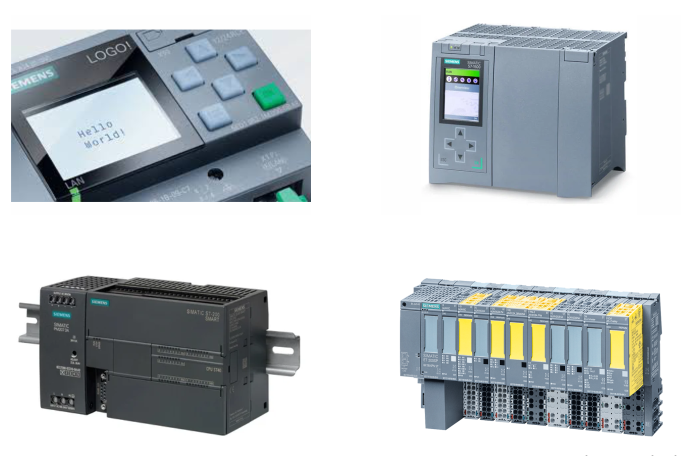
In our modern day and age, with more corporations and intelligent devices, automation is an essential element of each production and manufacturing line. From tiny machines to large factories, businesses need to find means to accelerate accuracy and efficiency. One of the greatest ways to achieve this is by using a PLC motor. So what is a PLC motor, and how do you utilize it in your automation?
Let us discover what the future has in store with the age of PLC motors and why they are the most ideal for effective automation.
What is a PLC motor?
Let us divide the term first. PLC stands for Programmable Logic Controller. It is an electronic computer that is specially made to be used in industry for controlling processes and machines. When a motor is driven by a PLC system, it is called a PLC motor.
It is actually a common electric motor (e.g., AC motor or DC motor) that is interfaced and programmed with a PLC. That interoperability enables industries to program, automate, and monitor motor operation with accuracy.
1. Accuracy Control and Customization
PLCs can be programmed to drive motors at precise speeds, directions, and times. You can use several sequences, delays, and cycles as per your requirement.
For instance, in a conveyor belt operation, a PLC motor can be programmed to automatically start, automatically stop, and even reverse direction automatically, based on the load or stage of operation. This kind of control maximizes production efficiency and minimizes the likelihood of human error.
2. Improved Efficiency
Automation is simply slowing down and eliminating wastage. That is exactly what a PLC motor achieves. Because it performs pre-programmed instructions, it never wastes time when resting or in a pause state. It can respond to inputs immediately and adjust settings as fast as required when the need arises.
This helps in saving energy, reducing operating costs, and increasing overall efficiency. Whether you’re running a bottling plant or a textile mill, a PLC motor will keep things moving at the right pace.
3. Easy Troubleshooting and Maintenance
With traditional motor configurations, faults may take a long time to detect. But with a PLC motor, faults are easier to locate. With most PLCs, there are diagnostic features that will tell you in case something is wrong.
This aids early detection of problems by technicians, hence less downtime. This leads to higher productivity and less maintenance expense in the long run.
4. Ability to Expand in the Future
Firms grow and develop as time goes by. You might need more equipment or to replace the equipment you have. A PLC motor system becomes easier to develop. Because PLCs are programmable, you can reprogram them for various purposes without having to upgrade the entire system.
For example, when you install a new packaging line in your factory, the same PLC system can once again be fitted to power the new motor.
5. Smart System Integration
Nowadays, industries are transitioning to Industry 4.0—an age where machines can talk to one another and function intelligently. A PLC motor is ideal for this new arrangement. PLCs can be linked with sensors, computers, and cloud technology, so absolute automation and monitoring of data can be achieved.
This implies that your motor can react to current data, temperature, speed, or pressure and adjust its operation. This smart interface results in improved quality control and reduced production time.
6. Safety and Reliability
Safety is never traded off in the industrial setting. You can program it to shut down automatically upon detecting a crisis or to get stopped in case of a fault. You can also add safety interlocks, alarms, and emergency stops in the PLC system with ease.
Second, PLC systems are very reliable and durable. They remain unaffected by harsh environmental conditions such as heat, dust, and vibrations and yet keep on running the motor safely for years to come.
7. Low-Cost in the Long Run
Installation of a PLC motor system may appear to be costly at first sight. But with the long-term advantages such as low labor, low maintenance, energy savings, and reduced errors, it is an investment worth every penny.
The return on investment (ROI) is also very high since you’re getting improved performance with fewer issues. Small and medium-sized enterprises can also take advantage of employing PLC motors for their daily automation requirements.
8. Extensive Variety of Applications
PLC motors are not used by one industry alone. They’re used in nearly all industries, such as
Automotive manufacturing lines
Food and beverage plants
Pharmaceutical companies
Packaging plants
Water treatment systems
Textile and garment units
Construction and heavy equipment
Whether lifting, pushing, pressing, or rotating—an industrial PLC motor can perform them all with precision and accuracy.
Final Thoughts
If you must automate your business or replace an outdated system, the selection of a PLC motor can be an upheaval. It provides dependable control, more flexibility, improved safety, and cost savings in the long run. As technology keeps developing, smart and productive automation will gain priority. Your PLC motor is your ticket to facing this future with confidence.
So don’t procrastinate tomorrow. Begin building a smarter, faster, and more accurate setup today with the power of a PLC motor.


